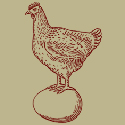|
Depending on which version of Excel, I'd probably say use countif formulae. Basically, if we use the example you gave and apply the column letters and row numbers: Sheet One: code:code:=countif('Sheet One'!2:2,B$1) Copy and paste that into the other cells on Sheet Two, and it will tell you how many cells in the Sheet One row match the Category heading on Sheet Two. There are a few limitations here. First, it requires that the order of the Responses on both sheets is exactly the same. Second, it requires that the categories be precisely defined and are the actual headings of the columns on Sheet Two. If those two things are true, countif should give you what you need. If not, you'll need to get creative with matches and vlookups, I think.
|
|
|
|

|
| # ? May 11, 2024 09:46 |
|
GregNorc posted:I have a question on pivot tables (I think) You can do this with countifs like Byers says above, but if you're open to changing your source data structure, it's pretty trivial to make a pivot table out of it too. Here's a quick spreadsheet using your example data that does this. The "old" tab has your data formatted as in your first example. I copied and pasted a few times to re-arrange it on the "new" tab, basically making "coder" into a generic column that was filled in with the specific record, instead of having a different column for each coder. That allowed me to consolidate your data into three columns: question, category, and coder. Then it's pretty easy to create a pivot off of this that gives you the result you're looking for, in the "new pivot" tab, using "question" on rows, "category" on columns, and count of "coder" in the values. Depending on your data and what you will be doing with it in the future, this might be more extensible than using countifs, but it's up to you.
|
|
|
|
.
maskenfreiheit fucked around with this message at 19:18 on Jun 1, 2017 |
|
|
|
GregNorc posted:One issue: When I try and drag it (so I don't type these all by hand), it increments some bits I'd rather stay static. Is there any way to force excel not to increment part of the equation? You can make a cell, row, or column reference absolute by putting a $ in front of it ("=$A$1" will keep both A and 1 constant), or use F4 while clicked in the formula to toggle through the various ways you can make them absolute.
|
|
|
|
.
maskenfreiheit fucked around with this message at 19:18 on Jun 1, 2017 |
|
|
|
Is it possible to have the tool tips (?) that show up when you're entering a formula that tell you what arguments are needed appear for user defined functions?
|
|
|
|
Ragingsheep posted:Is it possible to have the tool tips (?) that show up when you're entering a formula that tell you what arguments are needed appear for user defined functions? I've always been told no in the past, and a quick Google search suggested it's still not possible to have the tooltips pop up as you're typing the function.
|
|
|
|
I'm rather new to making macros and doing code type stuff, but am good at the basics of excel. I cannot figure out how to make a macro to do what I've been doing manually. I have two workbooks, A and B. Workbook A has particular DATA for an ITEM (hundreds of them) that I want to add next to the same ITEM in Workbook B where the ITEMs are ordered correctly and narrowed down to just 80 of them. Workbook B has the DATA consecutively ordered and unfortunately wbA (the source for the DATA) doesn't. It's scattered all over inside of a cell and I have to manually search to find the correct reference. I've contacted the source for the Workbook A and they don't plan on adding anything to sort the items consecutively which makes my process the way it is now. For now I just copy ITEM1 in wbB Then go to wbA, ctrl F and paste ITEM1 Find the cell, go to the adjacent cell for the DATA Copy the DATA Then go back to wbB to paste it in the corresponding cell. code:
|
|
|
|
Try thiscode:
|
|
|
|
Just a random question about charts. I know that I can't directly concatenate something in a chart title, but does anyone know why? Like.. on the chart itself, I can't say:code:code:
|
|
|
|
Turkeybone posted:Just a random question about charts. I know that I can't directly concatenate something in a chart title, but does anyone know why? Like.. on the chart itself, I can't say: code:Edit: Removed an extra line. Just rename the chart name and text/range. stuxracer fucked around with this message at 03:46 on Feb 20, 2013 |
|
|
|
Yeah, I just wanna know why it can't be done right in the chart! I never would have even cared, but someone asked me why not, and now I am determined to find out why.
|
|
|
|
Turkeybone posted:Yeah, I just wanna know why it can't be done right in the chart! I never would have even cared, but someone asked me why not, and now I am determined to find out why. Because Microsoft.
|
|
|
|
ok I have a p. stupid situation that I can't figure out (I love and hate conditional formatting; i love how it makes large amounts of data easier to interpret at a glance but find setting them up to be rather cumbersome) So I have a few columns that all describe the status of various parts. The value of the cells in these columns can either be "Y" or a date. The dates are in month/day/year format, but uncontrolled other than that (i.e. could be 01/01/2013 or 1/1/2013 or 01/01/13 depending on who inputs it). I am trying to highlight dated cells in green. My current method, due to the looseness of the formatting, is to search for */*/*, but I can't make it work for some reason. I have considered searching for two /'s in each cell, but that seems like a clumsy way to do it. Anyone got any ideas? This is such a simple thing but it seems to be beyond me. Example below. y's turn orange, I want the dates to be green. code:DoleMIGHTY fucked around with this message at 14:41 on Feb 21, 2013 |
|
|
|
Is it possible to have two cells such that I can change the content in one cell and have the other cell mirror it and vice versa?
|
|
|
|
OK, how can I force a cell to rounddown, without it having to be done in a separate cell with a formula? I am aware of ROUNDDOWN(cell, digits), but I would prefer the rounding to happen automatically in the cell where the value is entered. Currently, the cell itself automatically rounds to the nearest. So if the cell is formatted as percentage and has 2 decimal places, 1.344 automatically becomes 1.34 and 1.345 becomes 1.35.
|
|
|
|
=ROUNDDOWN(1.345,2)/100 I just did that with percent formatting and it seems to do what you want? ROUNDDOWN seems to be (number, digits) not (cell, digits) as you wrote.
|
|
|
|
Fermunky posted:OK, how can I force a cell to rounddown, without it having to be done in a separate cell with a formula? I am aware of ROUNDDOWN(cell, digits), but I would prefer the rounding to happen automatically in the cell where the value is entered. Currently, the cell itself automatically rounds to the nearest. So if the cell is formatted as percentage and has 2 decimal places, 1.344 automatically becomes 1.34 and 1.345 becomes 1.35.
|
|
|
|
The Gripper posted:It's not possible as a cell format, unfortunately. What you would want is truncating decimal places, which is probably omitted because it doesn't really have a common usage in spreadsheets or is uncommon enough to not warrant a cell format definition of it's own. As far as I know your only option is a separate column with ROUNDDOWN(cell, digits), or some probably ill-advised manipulation of your source data as it's imported (if it's imported). It is entered. Sales teams enter a rate with 3 decimal places, but our billing system only allows rates of 2 decimal places, so to not over charge a client, 1.335 MUST be entered into the system as 1.33, and the billing group manually adjusts the bill to account for the missing .005%. I guess I could force the cell to 3 decimal places and just have the team entering the rates into the system make sure they always round down. I suppose the only other way would be in vba and have an onchange event put the value into the rounddown function. Thanks!
|
|
|
|
Ragingsheep posted:Is it possible to have two cells such that I can change the content in one cell and have the other cell mirror it and vice versa? Aside from some VBA, I'm not seeing any way to get around the circular reference. Maybe make both cells references back to one master cell and just change that one? Or define one of those two cells as the master and use the other one to reference back to that one.
|
|
|
|
I'm probably missing something incredibly obvious. I know how to set up a normal 3-color conditional scale, but this is a weird case. What I want is: < -2 green -2 to -1 green to white gradient according to value -1 to 1 white 1 to 2 white to red gradient according to value > 2 red If you just set 0 as the midpoint, since 1 is halfway to 2, it gets colored 50% red when I want it to be start of the gradient. I tried setting up multiple 2-color gradients, but one just covers up the other. Hmm. I suspect the solution is a formula for the midpoint, but damned if I can figure it out or google what I need to put there.
|
|
|
|
Argh, I have someone asking me how to do this in excel but I don't know much about Excel and can't get anywhere. There's amounts of money in Column A, and "codes" in column B that have letters and numbers. (300 columns) She wants to get the sum of entries in column A that have no code in column B Also the sum of all entries in column a that do have them in column B. (so basically just separate the values and sum them up in two separate spots.) I can't figure out a way to do it with SUMPRODUCT and everything else is leading me nowhere. Any suggestions? 
|
|
|
|
If I'm reading that question correctly, you should be able to do that easily with a pivot table. Go to the Insert tab, then click "Pivot Table". By default it should select all the data in your table. Click OK. You are now in a new tab with a pivot table. On the right you should see the pivot table fields list. Grab the "Codes" column header (whatever its real name is) and drag it to the "Row Labels" field on the lower right. Now the table on the upper left will have changed to a list of all the codes. Drag the "Money" column header into the "Values" field, which is right next to the "Row Labels" field. Excel will automatically generate a "Sum of Money" column in the table. Look there for an entry called (blank). The number next to it should be the sum of all the "Money" values that are next to blank rows. You can then take that from the Grand Total at the bottom to determine the sum of the non-blank money amounts. I hope I read your question right, I am worried that if you know what SUMPRODUCT is you may have already considered the pivot table solution and it doesn't meet your needs for some reason.
|
|
|
|
Haydez posted:I can't figure out a way to do it with SUMPRODUCT and everything else is leading me nowhere. Any suggestions? Does SUMIF not work?
|
|
|
|
edit:^^^ I have no idea how to use SUMIF to sum a column if another column is blank though Awesome, thanks! That seems to do it. I was googling around trying to help her out and saw some people mentioning using SUMPRODUCT as a way to do it but it wasn't working. Although I wish there was an easier way since she has each month on a separate worksheet and will have to delete those columns so they don't print out I guess.
|
|
|
|
Haydez posted:edit:^^^ I have no idea how to use SUMIF to sum a column if another column is blank though SUMPRODUCT can be used similarly to SUMIF but it moves the "if" part outside of the formula, which allows for more complicated "if" conditions than SUMIF can handle. You could put in column C an "if" condition like: IF(ISBLANK(B1),0,1) then the SUMPRODUCT of columns A and C are the sum of the entries corresponding to non-blank B values. If this still doesn't work, maybe those entries aren't truly blank (like a single space, or some other non-print character, etc). Make sure the two ranges in SUMPRODUCT are the same size. Depending on how well-structured your sheets are, there may be a (relatively) simple solution using the ADODB library in VBA to query all those sheets in one go, but this is probably not worth it unless you have like a million sheets to go through.
|
|
|
|
Haydez posted:edit:^^^ I have no idea how to use SUMIF to sum a column if another column is blank though This will sum values in column A when the matching row in column B is blank. code:code:
|
|
|
|
I've created a spreadsheet with clients being targeted to sign a contract. In the sheet I've created a data validation drop down list to indicate their current status; Signed Pending Declined Alongside this I'm also running a column tallying the number of contracts signed. I want to create a formula that enters a count in this cell when I select one of the options from the drop down list. E.g. A1 A2 A3 A4 A5 Signed Pending Declined Customer Name Signed Contract 1 0 0 Customer 1 Signed 0 1 0 Customer 2 Pending The A5 column is the one with the drop down list. I want the status of drop down list to change the number under the corresponding column; e.g if I select 'Signed' on A5, it will reflect a count of 1 in the A1 list. Any idea how to do this?
|
|
|
|
Boston George posted:I've created a spreadsheet with clients being targeted to sign a contract. In the sheet I've created a data validation drop down list to indicate their current status; In your example it looks like you confused columns and rows so I made the table below. code:If you want to return a value in [cell A1] then you would use =countif($E$3:$E$65535,$E$1) or =sumif($E$3:$E$65535,$E$1,$A$3:$A$65535). If you want to hide the rows that don't match column E, then you can remove your combobox - I would delete the entire row. Highlight your data and either go to the Insert Tab and clicking the insert table button, or go to the data tab and click on the filter button. This will make the column labels (signed, customer name, signed contract, etc) into pull down menus where you can choose your filter and any row that doesn't match is automatically hidden.
|
|
|
|
Old James posted:In your example it looks like you confused columns and rows so I made the table below. =sumif did the trick... thanks mate!
|
|
|
|
Anyone know a good book/resource for learning about VBA and Macros for Excel?
|
|
|
|
I learned using books by John Walkenbach.. he has some giant biblical type excel book, but I think he also penned VBA for dummies.
|
|
|
|
I am trying to export a MS Access table into Excel via a form button. The following code works perfectly providing my table only has one row of data. I've made a note on the line that seems to be causing the error. code:Tortilla Maker fucked around with this message at 14:23 on Mar 14, 2013 |
|
|
|
Tortilla Maker posted:I am trying to export a MS Access table into Excel via a form button. The following code works perfectly providing my table only has one row of data. I've made a note on the line that seems to be causing the error. It looks like you are trying to do too much in that line. First you are resizing the size of the range, and at the same time assign values to those cells. Try breaking it up into two steps and don't forget to use the Set keyword when doing the resize.
|
|
|
|
Old James posted:It looks like you are trying to do too much in that line. First you are resizing the size of the range, and at the same time assign values to those cells. Try breaking it up into two steps and don't forget to use the Set keyword when doing the resize. Thanks. Replaced it with different code and its working great now.
|
|
|
|
I'm posting this for my wife. She has two ranges of numbers, and needs the MIN of the two ranges, excluding any cell with "0". She says: I need to find the MIN for cells B2:B26 and B31:B54 (not separately but as a collective) I do not want the MIN considered in the formula for any cell that shows “0” I keep it this way because the report has to show 2 separate groups of data but the stats need to be collective for MIN, MAX, MEDIAN, and MODE This is the sample data in B2:B26 and B31:54 Any idea how to do this? code:
|
|
|
|
me your dad posted:I'm posting this for my wife. She has two ranges of numbers, and needs the MIN of the two ranges, excluding any cell with "0". Quick solution is to write: =min(if(b:b>0,b:b)) Just hit ctrl+shift+enter instead of enter when you finish writing the formula in the cell. You should see {} brackets around the formula when hovering over it. You can restrict the range to a subsection of column b like b2:b54 in your example if you want or if there is data in column b that you don't want to consider.
|
|
|
|
As part of Special Olympics Healthy Athlete program we perform a variety of services for each athlete or unified partner. It has proven difficult if not impossible to digitize/record these charts because students are unable to disseminate the relevant information. My big idea is to have a copy of the form in excel (that looks exactly like the paper form), such that a(n untrained) student can fill out the name, number, etc. fields, click a few check boxes. Then automagically when they hit "Next/Submit/Whatever" the information would be transposed onto a work sheet. To put it another way, I would like to be able to click a button and add information from some fields on a worksheet and append them as new rows on a different worksheet, the clear the fields on the first worksheet. (I can post a copy of the sheet if that helps) Is there a tutorial that would fit my needs? Or a macro?
|
|
|
|
XmasGiftFromWife posted:As part of Special Olympics Healthy Athlete program we perform a variety of services for each athlete or unified partner. It has proven difficult if not impossible to digitize/record these charts because students are unable to disseminate the relevant information. This might be better suited to Access as you can create a Form to enter data and write it directly to a database. http://office.microsoft.com/en-us/access-help/create-forms-for-a-new-database-RZ101773001.aspx
|
|
|
|

|
| # ? May 11, 2024 09:46 |
|
Old James posted:This might be better suited to Access as you can create a Form to enter data and write it directly to a database. http://office.microsoft.com/en-us/access-help/create-forms-for-a-new-database-RZ101773001.aspx This is all nonprofit work so I am fortunate most sites have (some version) of excel. Access isn't really an option.
|
|
|






















